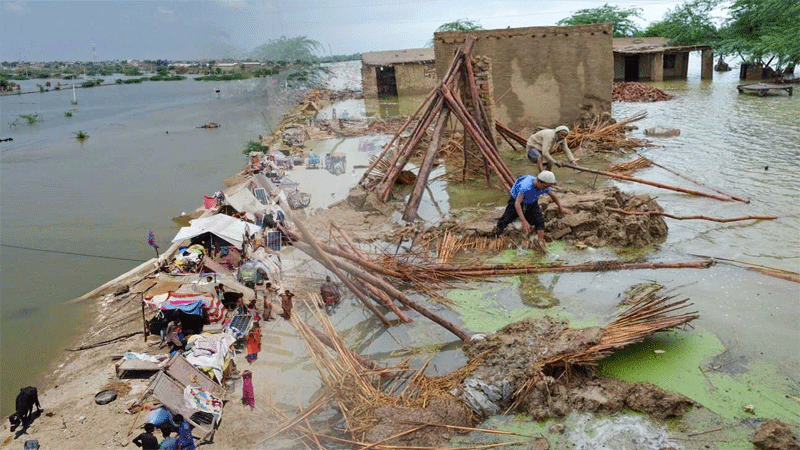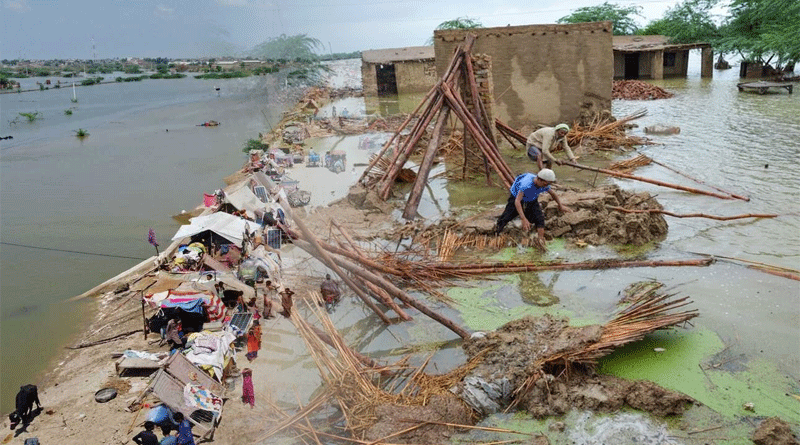At least 1,700 people were killed by devastating floods in Pakistan in June 2022 that were brought on by unusually heavy monsoon rains.

The northwestern Pakistani provinces of Khyber Pakhtunkhwa (KP) and Gilgit-Baltistan have been experiencing high temperatures, and Pakistan’s climate change minister warned on Thursday that the country was once again at risk of experiencing flash floods and glacial lake outburst floods (GLOF).
At least 1,700 people were killed by devastating floods in Pakistan in June 2022 that were brought on by unusually heavy monsoon rains. A large portion of agricultural land was destroyed, and the disaster affected 33 million people. The destruction caused losses to the cash-strapped nation of $30 billion, according to the Pakistani government.
Around 20 million people, including 9 million children, are still thought to be in need of humanitarian aid in flood-affected areas, according to UNICEF estimates.
The risk of flash floods and glacial lake outburst floods (GLOF) is increasing, the minister stated in a tweet on Thursday. “Temperatures in Gilgit-Baltistan and Khyber Pakhtunkhwa are expected to be 4-6 degrees higher than normal.”
“District administrations, local groups, and communities must exercise caution and remain vigilant, particularly during the coming week, which falls on Eid ul Azha. Let’s put safety first.”
The minister added that Pakistan has more glaciers than any other country outside of the polar region and that thousands of people were displaced by over 30 GLOF incidents last year.
Pakistan was ranked as the eighth most vulnerable nation in the world to long-term climate risk in the Global Climate Risk Index (2021).
The Hindu Kush Himalayan (HKH) region, which includes Pakistani mountains, has experienced “unprecedented and largely irreversible” effects of global warming on its glaciers, snow, and permafrost, according to a new assessment report by an eight-nation environmental conservation organisation.
In the HKH region, which includes Pakistan, increased glacier melting, floods, and landslides are anticipated in the future. In the same catchments, fast-onset hazards like GLOFs and slow-onset hazards like erosion and sedimentation coexist.
According to the report, 200 glacier lakes are thought to be dangerous, and by the end of the century, the risk of GLOF may significantly increase. This raises the possibility of greater loss and damage, including displacement, when coupled with population growth and economic activity.
